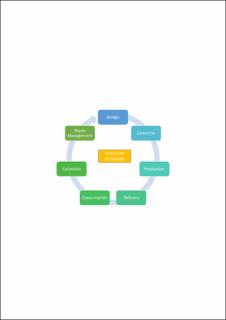| dc.description.abstract | Although growth is seen as the main purpose of every economy, its consequences are vast and painful to the deterioration of environment. Circular economy has risen as a green transition of the international economy with the purpose of decoupling environment from growth. Thanks for this concept that waste of a supply chain is, once again, re-considered as input for the others. E-waste has been concentrated as one of the most important waste sources, since metals and materials from e-waste are mainly from non-renewable sources.
Under the umbrella concept of circular economy, several indicators have been formed to measure the performances of a huge number of elements, such as waste management, End-of-Life treatment, sustainability consumption, etc. However, regarding circularity and longevity as two of the main viewpoints of the concept, only two set of indicators are present until now. The purpose of this thesis is to create the third chain of metrics – the Material Circularity Metrics Chain – measuring circularity and longevity of material within the economy, which both former indicators could not achieve to estimate. The study hypothesizes that with recycling and refurbishment strategies, metals in products are circulated within the technosphere until they become obsolete. Returned products are assumed to be refurbished or recycled, thus prolonging the lifetime of metals and materials within the economy. Besides, the chain of metrics also estimates the retained emission and saved energy of the two waste management strategies, since recycle and refurbishment steps do not require as much energy and release as much emission as the mining-quarrying and production phases. Furthermore, to prove the linkages of economy and environment to society, the metrics chain calculated the amount of retained child labour working hours from circulated metals. This is believed to be the first group of indicators that can measure child labour working hours per gram of metals. Circular economy concept has reinforced the willing of maintaining metals in the economy, hence decreasing child labour.
Answers for the research questions are written in the theory part, yet an average smartphone is given as the pragmatic example. The results are in line with the theory that when metals can circulate more, material lifetime is prolonged, emission and energy are saved, and child labour is retained significantly. It is important that to achieve the goal, more efforts are needed to increase the returned of used products for waste management. | en_US |
